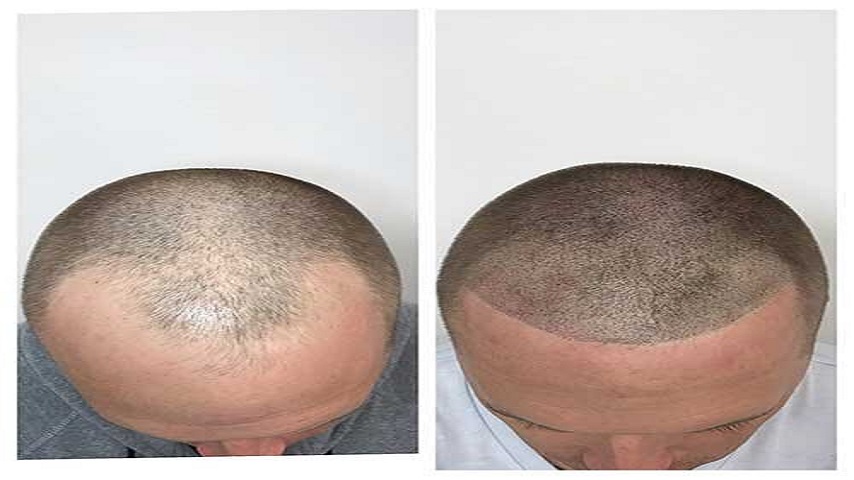Hair thinning is a common issue that can affect both men and women, leading to self-esteem issues and a desire for effective treatment. While surgical options like hair transplants are available, many people seek non-invasive alternatives to achieve thicker, fuller hair. Fortunately, several effective non-surgical treatments can help manage hair thinning and promote hair growth.
Understanding Hair Thinning
Hair thinning can result from various factors, including genetics, hormonal changes, nutritional deficiencies, stress, and poor hair care practices. It’s important to identify the underlying cause to choose the most appropriate treatment. Non-invasive treatments can offer substantial benefits with minimal risks and side effects.
Top Non-Invasive Treatments for Hair Thinning
1. Low-Level Laser Therapy (LLLT)
Low-level laser therapy is a popular non-invasive treatment for hair thinning that uses laser light to stimulate hair follicles and promote hair growth.
· How It Works: LLLT uses red or near-infrared light to penetrate the scalp and increase cellular activity in hair follicles. This process enhances blood flow, reduces inflammation, and extends the hair growth phase.
· Effectiveness: Studies have shown that regular use of LLLT can lead to significant improvements in hair density and thickness.
· Devices: LLLT is available in various forms, including laser caps, helmets, and combs, which can be used at home or in a clinical setting.
2. Topical Treatments
Topical treatments are applied directly to the scalp and can help stimulate hair growth and reduce hair thinning.
· Minoxidil: An FDA-approved over-the-counter treatment that helps to prolong the growth phase of hair follicles. It is available in 2% and 5% solutions.
· Natural Oils: Essential oils such as rosemary, peppermint, and lavender have been found to promote hair growth by improving circulation and reducing inflammation.
· Application: Apply these treatments consistently, usually twice a day for minoxidil, to see results over several months.
3. Nutritional Supplements
Proper nutrition is crucial for healthy hair growth. Supplements can help address deficiencies that contribute to hair thinning.
· Biotin: A B vitamin that supports hair, skin, and nail health. Biotin deficiency can lead to hair thinning.
· Vitamin D: Essential for follicle health. A deficiency in vitamin D has been linked to hair loss.
· Omega-3 Fatty Acids: Found in fish oil, these fatty acids help reduce inflammation and promote a healthy scalp.
· Multivitamins: Comprehensive multivitamins that include iron, zinc, and vitamins A, C, and E can support overall hair health.
4. Platelet-Rich Plasma (PRP) Therapy
PRP therapy is an innovative treatment that uses a patient’s own blood to promote hair growth.
· How It Works: Blood is drawn from the patient and processed to concentrate the platelets. This platelet-rich plasma is then injected into the scalp to stimulate hair follicles.
· Benefits: PRP therapy can enhance hair density and strength by promoting cellular growth and healing.
· Procedure: Typically involves several sessions spaced a few weeks apart, with maintenance treatments every few months.
5. Scalp Micropigmentation (SMP)
Scalp micropigmentation is a cosmetic treatment that creates the appearance of fuller hair.
· How It Works: Tiny dots of pigment are tattooed onto the scalp to mimic the look of hair follicles. This can create the illusion of denser hair and a more defined hairline.
· Benefits: SMP is a non-surgical option that provides immediate results and can be particularly effective for people with extensive thinning or bald spots.
· Longevity: The effects are long-lasting but may require touch-ups over time.
Lifestyle Changes to Support Hair Health
In addition to specific treatments, certain lifestyle changes can help improve hair health and reduce thinning.
1. Healthy Diet
A balanced diet rich in vitamins and minerals is essential for hair growth. Focus on:
· Proteins: Hair is primarily made of keratin, a type of protein. Include lean meats, fish, eggs, beans, and nuts in your diet.
· Iron and Zinc: These minerals are critical for hair health. Red meat, leafy greens, and pumpkin seeds are good sources.
· Antioxidants: Foods high in antioxidants, such as berries, nuts, and vegetables, can help protect hair follicles from damage.
2. Stress Management
Stress can exacerbate hair thinning. Incorporate stress-reducing practices such as:
· Exercise: Regular physical activity can help manage stress and improve overall health.
· Meditation and Yoga: These practices can promote relaxation and reduce stress levels.
· Adequate Sleep: Ensure you get 7-9 hours of quality sleep each night to support bodily functions, including hair growth.
3. Proper Hair Care
How you care for your hair can impact its health and appearance.
· Gentle Handling: Avoid aggressive brushing or combing, especially when hair is wet. Use a wide-tooth comb to detangle gently.
· Heat Protection: Minimize the use of heat styling tools. When necessary, use a heat protectant spray.
· Regular Trims: Regular trims can prevent split ends and breakage, promoting healthier-looking hair.
Conclusion
Thicker tresses without surgery are achievable through a combination of advanced non-invasive treatments and supportive lifestyle changes. Whether you opt for low-level laser therapy, topical treatments, nutritional supplements, PRP therapy, or scalp micropigmentation, each method offers unique benefits. By integrating these treatments with a healthy diet, stress management, and proper hair care, you can effectively manage hair thinning and enjoy a fuller, more vibrant mane.
6 Must-Try Trendy Fall Hairstyles for Women with Thin Hair

